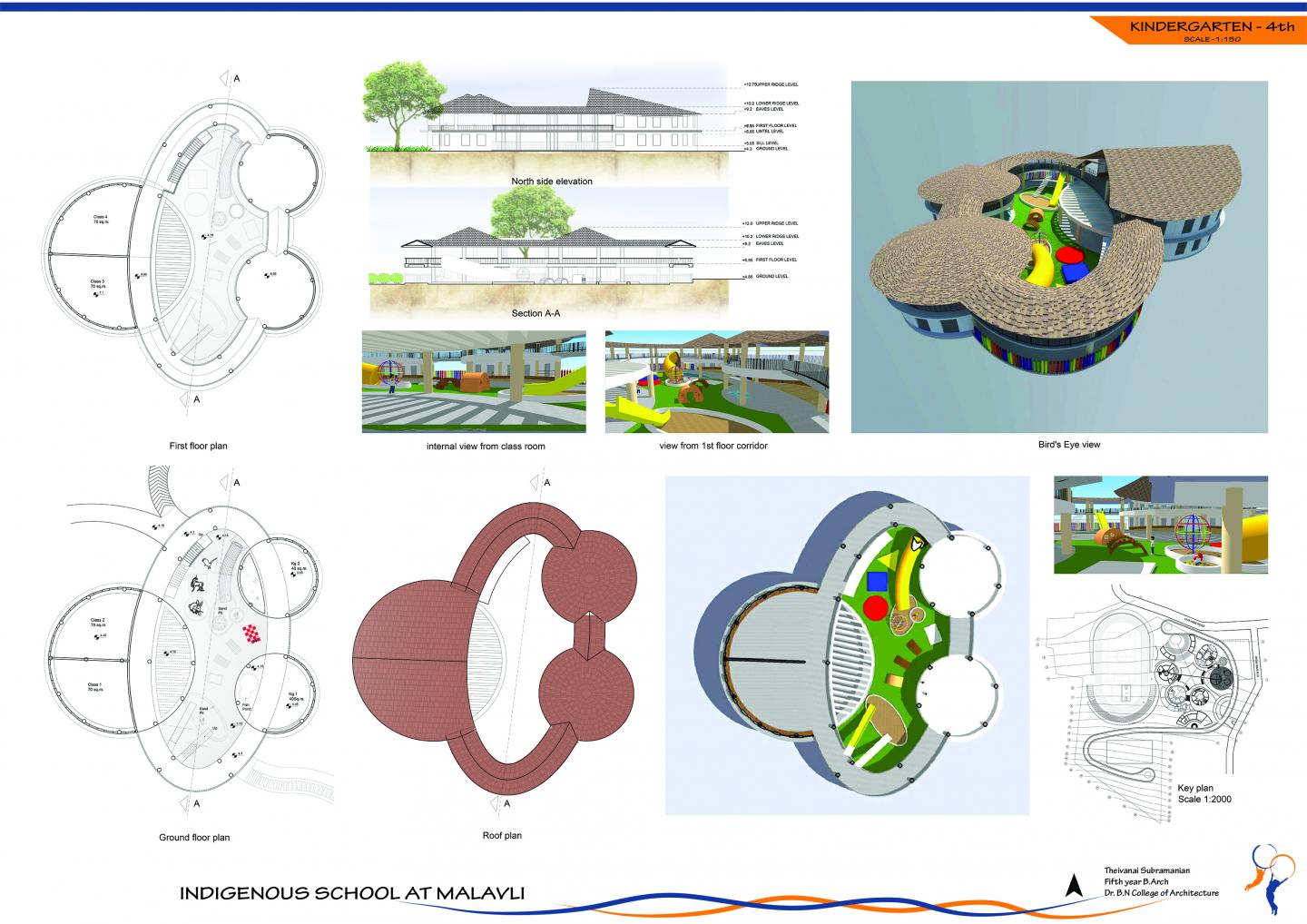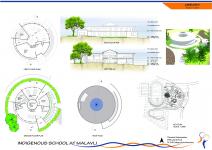Children at school age spend a considerable part of their time life at school and they are constantly interacting with the physical environment of their school. Thus it is important to explore children's own way of seeing and naming issues of concern, their special needs and spaces needed to support activities and aesthetic preferences. Both the quality of life and education are directly affected by the quality of school environment.
As a part of study, children of various age groups were asked to draw " what would they like to have in their school" and " the places they like the most in their present school"
Gram mangal schools were my inspiration where they conceived " a non formal education system". The aids are prepared using locally available raw material and are made by trained primary teachers.
Main aim of the project is
- to create an environment which is blend with nature and classroms which support non formal learning.
- an environment which gives the children freedom and encourages to link thier education to experiences such as bio dynamic farmic, vermiculture and health care.
- a child ought to be collecting a treasure trove of experience both at home and in the surroundings to be able to blossom naturally in any situation.
Academic area
- admin block
- kindergarten block
- pre primary block
- senior block
- library block
- dining area
- amphitheatre and classroms for extra-curricular activity
Other provisions
- agriculture land
- vegetable garden
- 400m track playground with basketball and football court
Provision for future residential development and staff quarters
2016
0000
Thesis design
Theivanai






